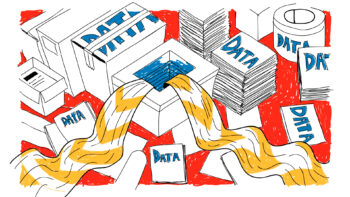Until a few years ago, green transformation in the data centre was treated as an expensive add-on – welcome in CSR brochures, but rarely written into key business indicators.
Today, with global data centre energy consumption expected to reach 2% of total electricity demand (around 536 TWh) as early as 2025, and projected to double within five years, the situation has changed dramatically.
Rising energy prices, regulatory pressures and increasingly stringent customer requirements mean that investments in energy efficiency are beginning to act as an accelerator of growth – rather than a brake on the bottom line.
Demand for computing power is exploding with the popularisation of generative artificial intelligence, real-time analytics and cloud services.
For data centre operators, this means one thing – the scale of operations is growing faster than the capacity of traditional infrastructure. And more scale means a bigger energy bill and a larger carbon footprint.
More and more companies understand that sustainability is no longer a matter of image, but a sustainable element of strategy.
In this new set-up, companies that are able to reduce energy intensity with increasing load gain both a cost and market advantage.
Optimising cooling, replacing equipment with energy-efficient equipment and implementing intelligent energy management can translate into double-digit savings in operating costs.
In addition, ‘green’ data centres are increasingly likely to win tenders – particularly where environmental criteria are as important as price and technical parameters.
In the enterprise segment and public contracts, compliance with ESG standards is simply becoming an input requirement.
Customers are keen to ensure that their own carbon footprint does not grow as a result of using IT services. Companies that can document their activities in this area gain a negotiating advantage.
Cooling consumes the most energy in data centres. Therefore, liquid cooling systems, which can be up to several tens of percent more efficient than traditional air-based solutions, are growing in popularity.
Hybrid systems combining both approaches allow the operating mode to be adapted to the current load, minimising energy consumption during periods of lower demand.
The second pillar is renewable energy sources – increasingly integrated with local energy storage, which increases independence from market price fluctuations and reduces emissions.
The third element is AI-based automation, which allows for predictive load management, intelligent control of cooling systems and optimal use of renewable energy.
Paradoxically, the technology responsible for the increase in energy consumption – artificial intelligence – can also help to reduce it.
Even the most energy-efficient data centre will not be truly ‘green’ if its suppliers do not meet environmental standards.
Indirect emissions (scope 3) can account for a significant proportion of the total carbon footprint. Therefore, reporting and emission reduction requirements, as well as certifications of sustainable practices, are increasingly appearing in contracts with partners.
For data centre operators, this means vetting the entire ecosystem of suppliers – from equipment manufacturers to energy providers.
For the IT channel, an opportunity to differentiate itself by providing solutions that help customers meet growing ESG requirements.
The EU CSRD (Corporate Sustainability Reporting Directive) extends the ESG reporting obligation to further groups of companies.
This means that in the coming years, transparent reporting of energy consumption and emissions will become not an option, but a legal requirement.
At the same time, green financing is growing in importance – from concessional loans to investments by funds focused on companies with a low carbon footprint.
Companies that meet environmental standards have greater access to cheaper capital, allowing them to accelerate their technological transformation.
Sustainability in data centres is no longer a cost embedded in CSR policies, but is becoming a factor that can increase margins, facilitate new customers and improve access to capital.












